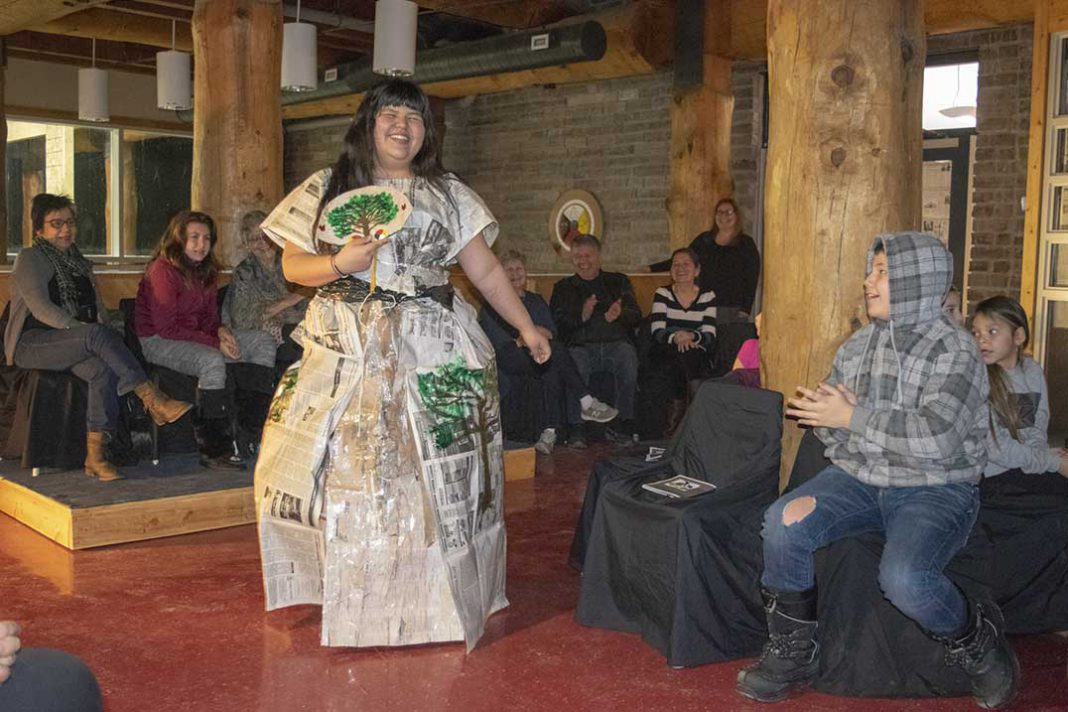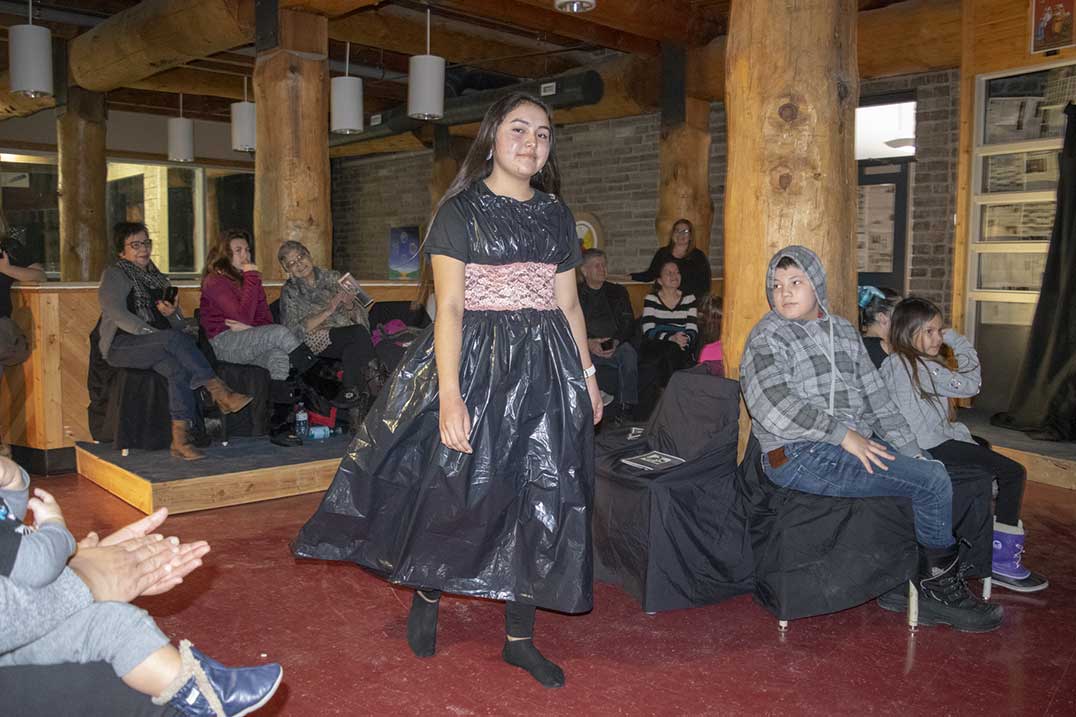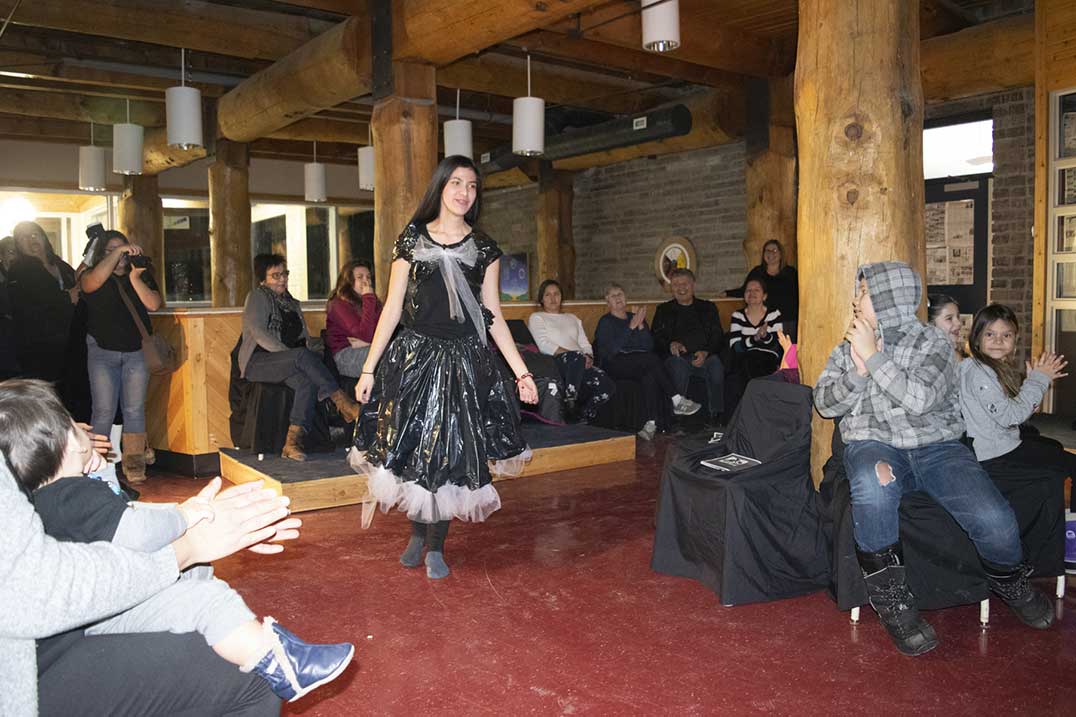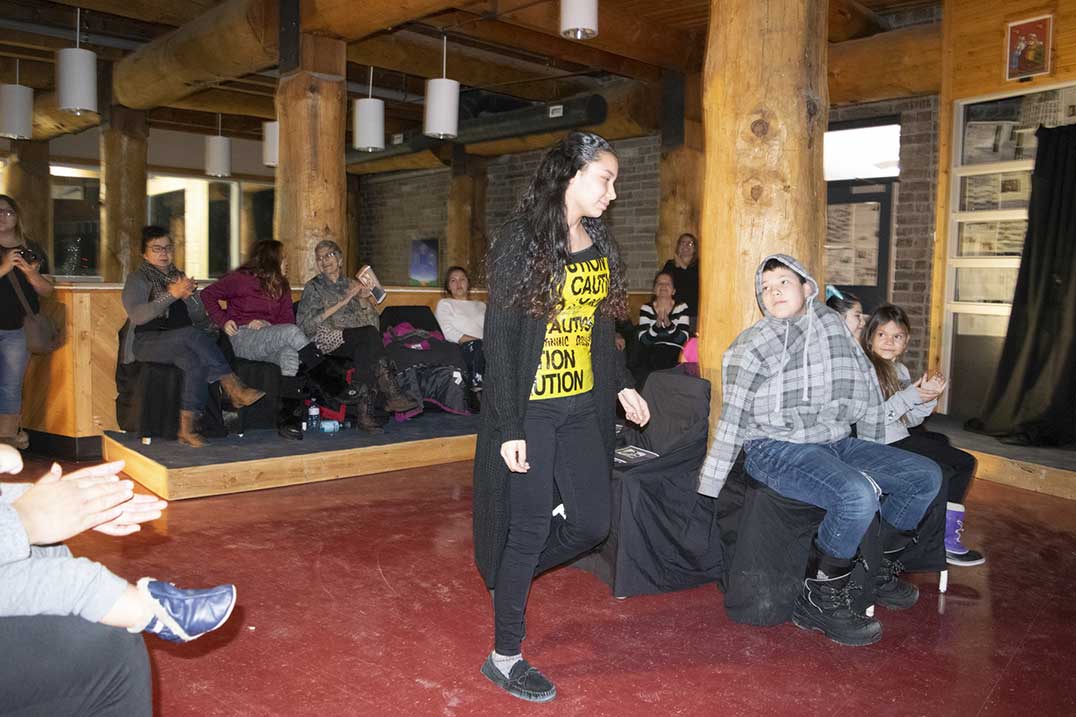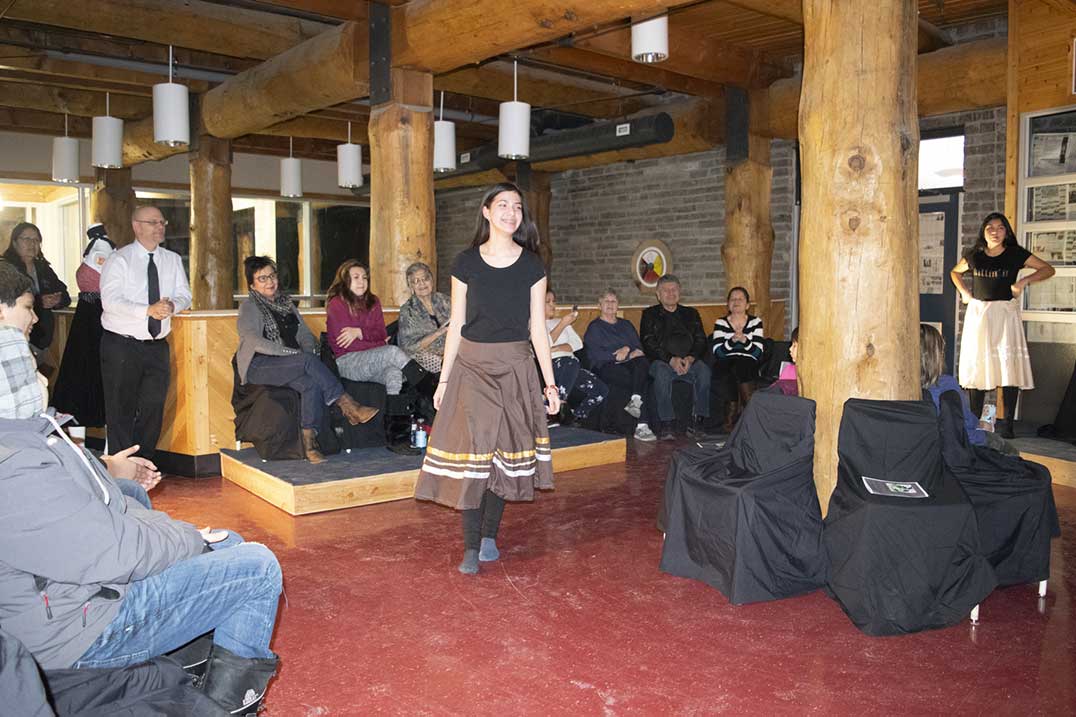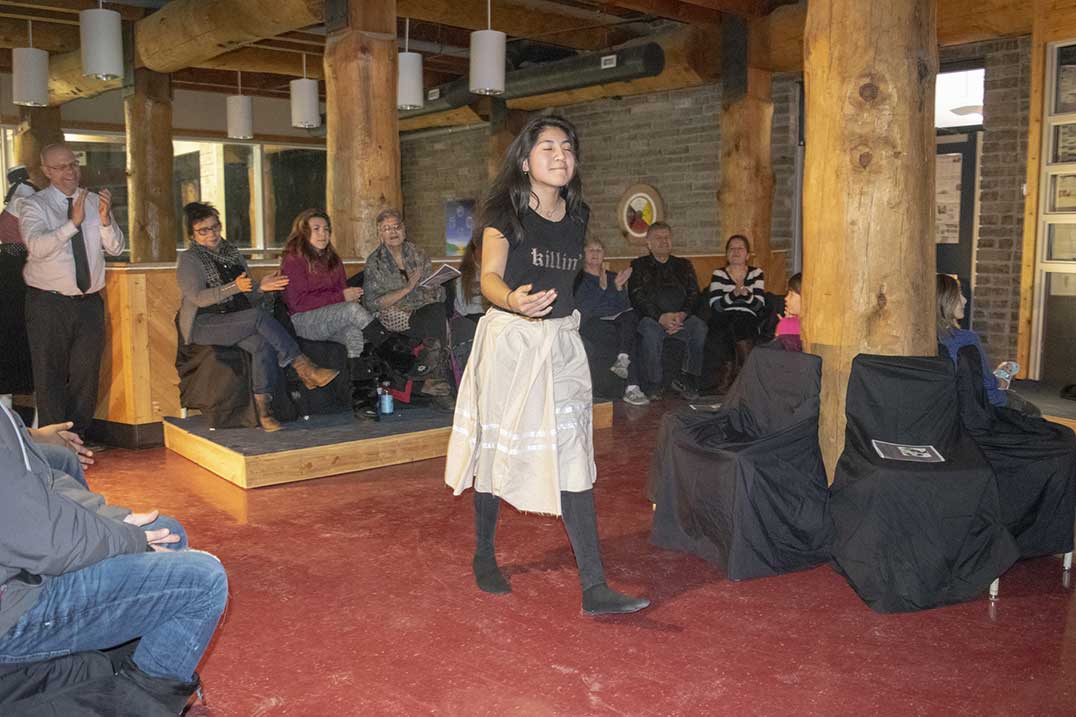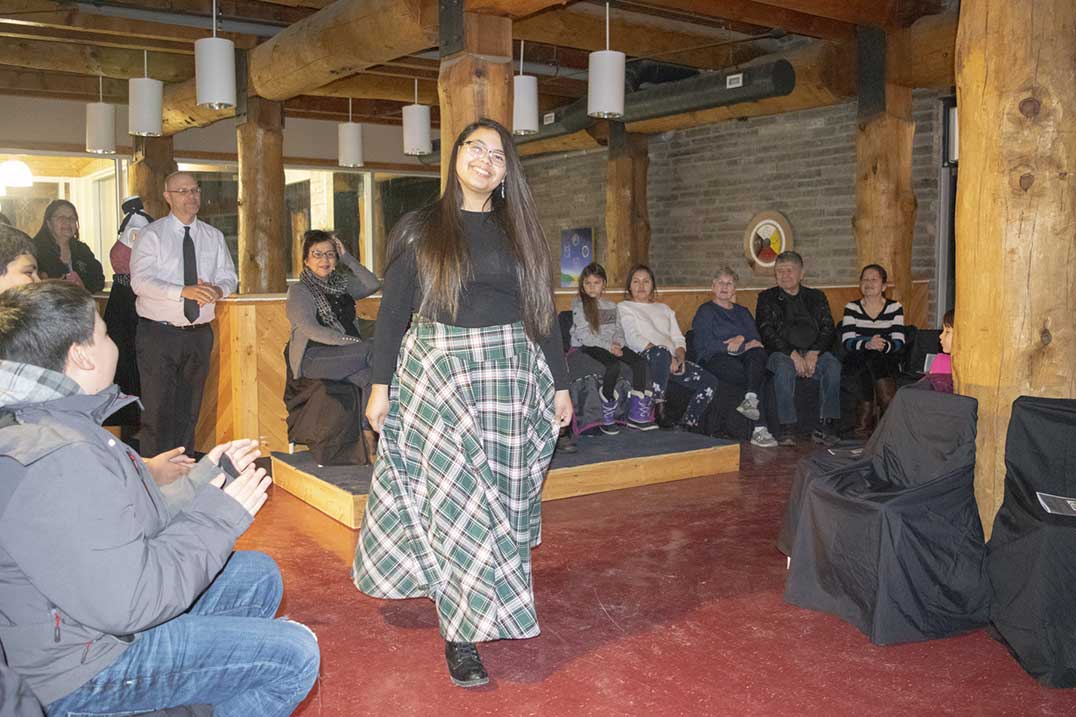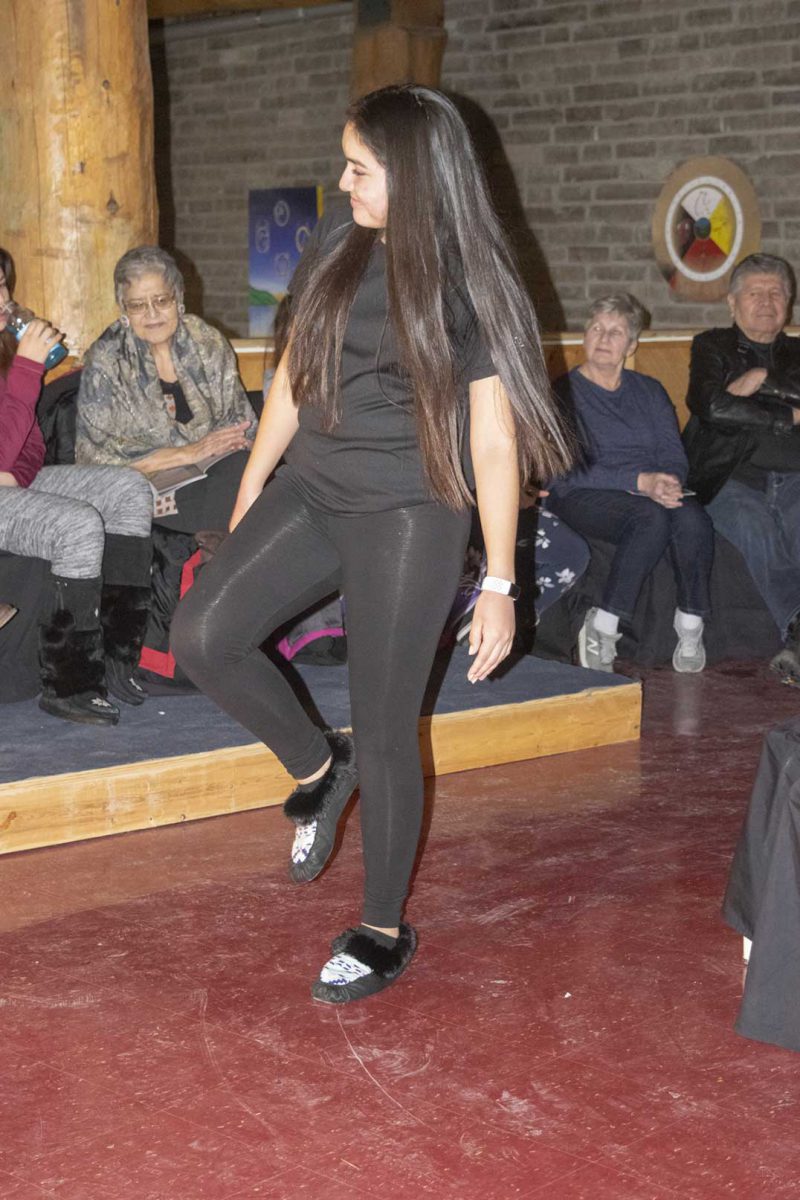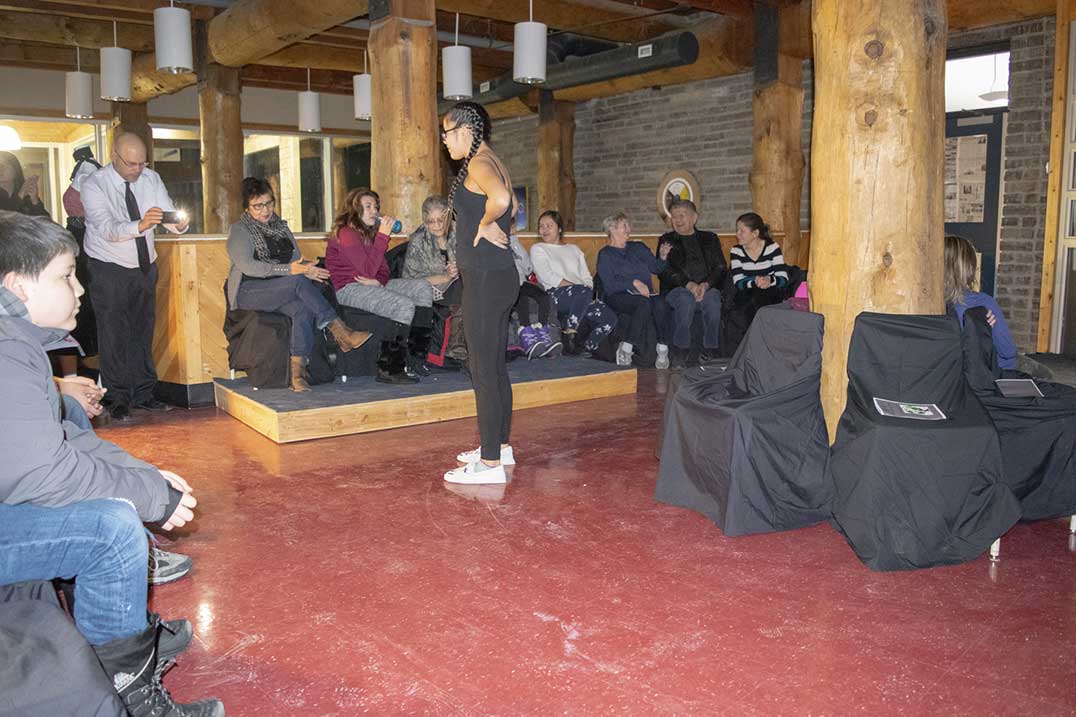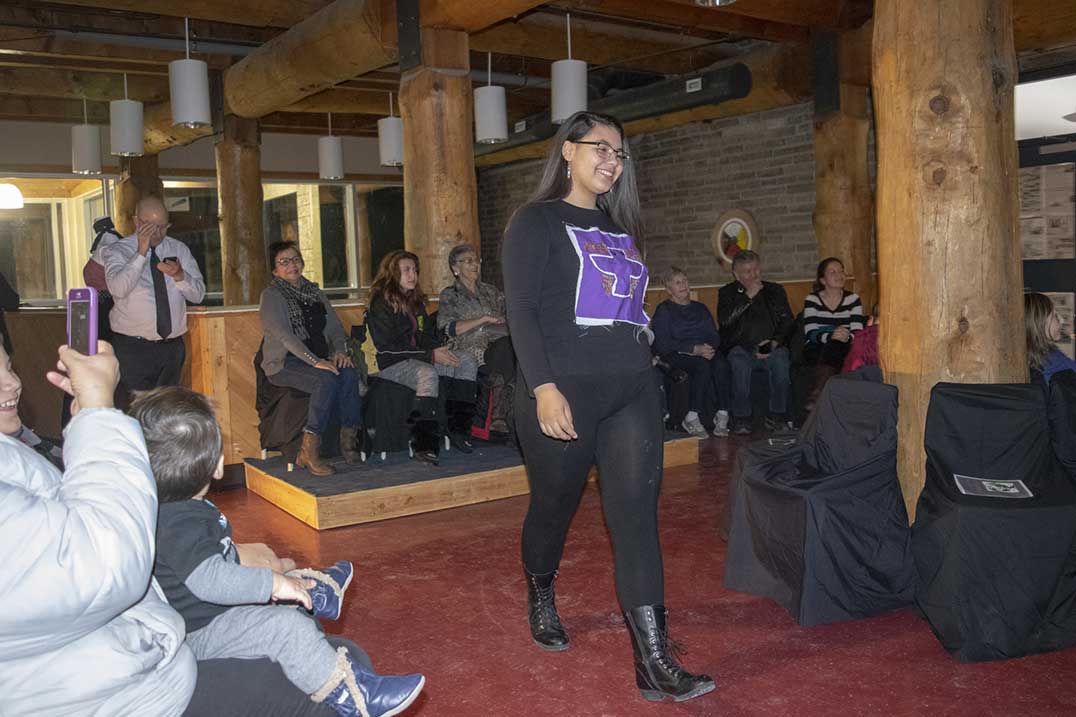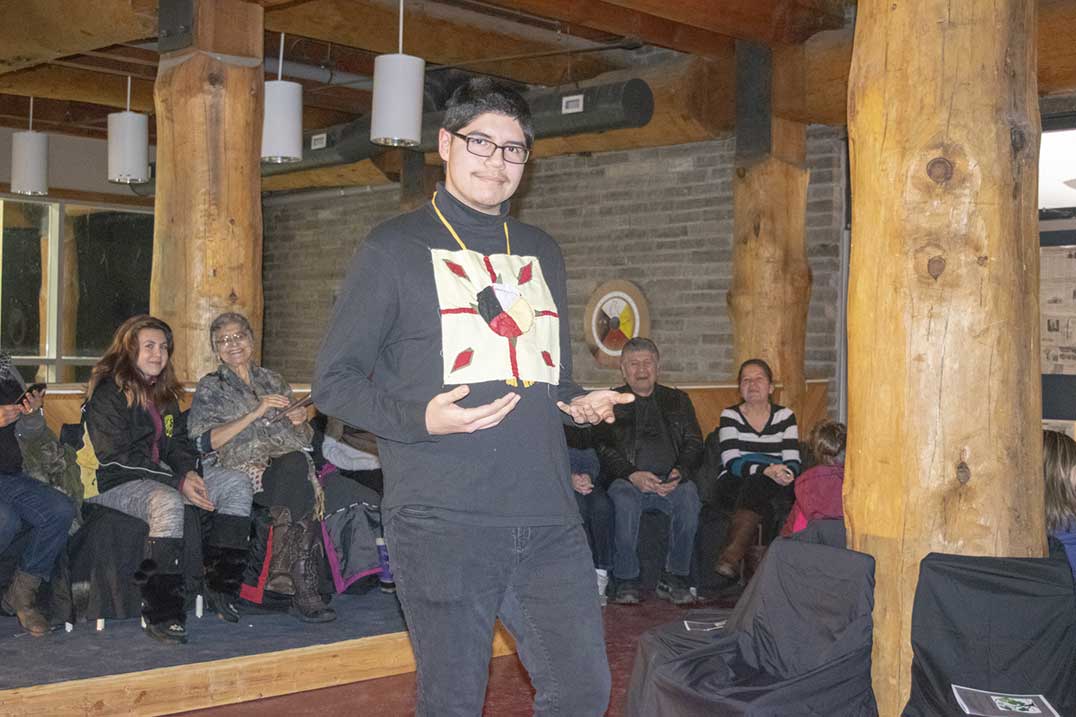WIIKWEMKOONG—Shimmering streamers hung from the dark-curtained doorway that led onto the small stage set up before the gathered crowd of eager family and friends. Music thumped through the upstairs halls of the Wikwemikong High School as participants made final touches to their outfits backstage. Soon, the music faded and student Ian Dokum gathered the attention of the room.
It was time for the 2019 Wasse-Abin High fashion show.
“Since the first fashion show in 2011, it has been a platform for the students not only to show their designs but also to help them conquer their fears of modelling, planning, self-promotion and taking ownership for their education by setting a goal and accomplishing it,” Ian said to the room.
“Although not every student will enter the fashion industry when they finish this class, they will come away with many other important skills like pride, self-confidence and a feeling of accomplishment that will be forever with them.”
The show was put on by students in the HNC 3C class. It served as their year-end culminating project and accounts for a significant portion of their final marks.
This year’s theme was sustainable fashion, also known as eco fashion. It focuses on creating a more resource-conscious and holistic view of the process of fashion production by calling attention to the impact clothes and humans have on the environment, while also promoting social responsibility.
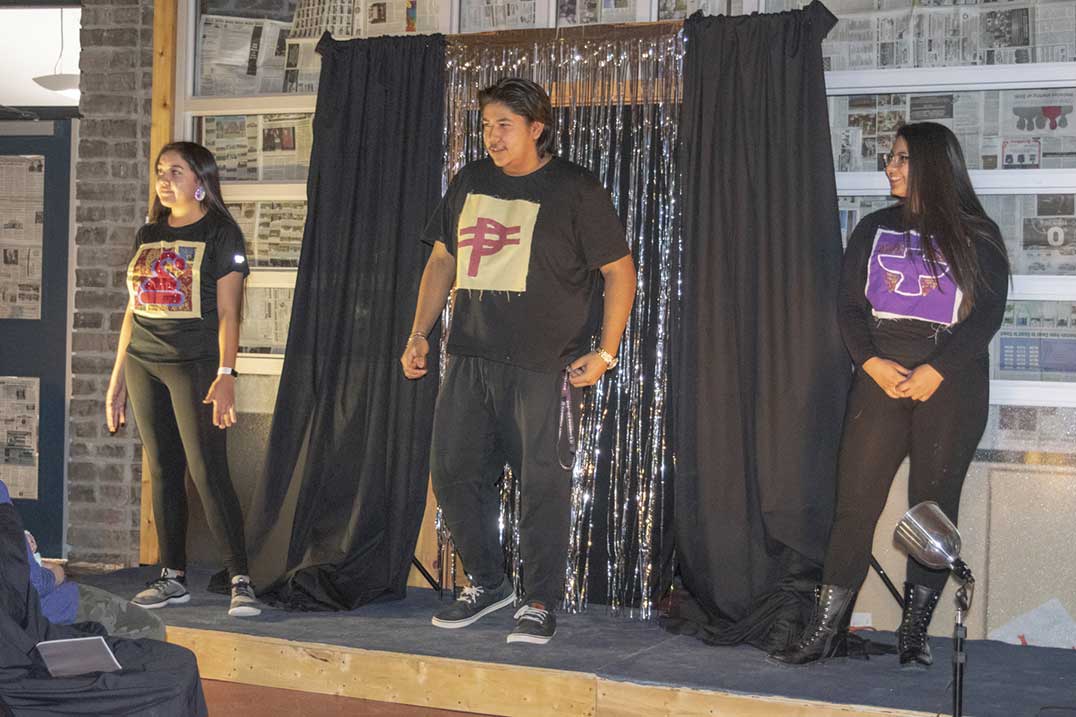
“Students this semester felt that sustainable fashion was an important way to move forward globally and to begin the mental shift from fast fashion to sustainable fashion,” said Ian.
According to the evening’s program, fashion is the second-highest polluting industry in the world. An average pair of jeans uses 3,400 litres of water to make and the world’s fashion consumption—80 billion items per year—is up 400 percent compared to 20 years ago.
The first item the students modeled were Molas. These come from the traditional dress of Kuna Indigenous peoples in Panama. They are worn by women on the back and front of their blouses.
After Spanish colonization, Kuna put their traditional designs onto fabric. The oldest surviving Molas are estimated at over 150 years old. Designs have changed over time, with the past 50 years seeing the inclusion of realistic and abstract designs of flowers, sea creatures and birds.
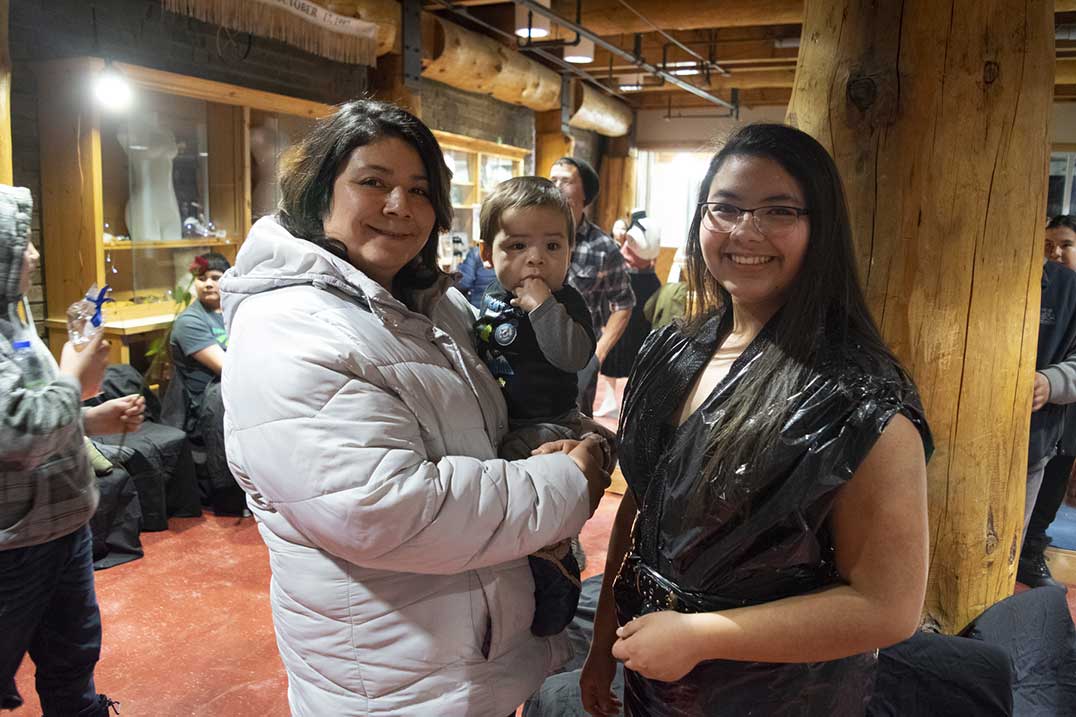
The next clothing item showcased were moccasins that the students had created. The word moccasin has roots in the Powhatan language but now refers to any styles of Indigenous footwear.
The moccasins had a special significance as well; these were made to promote Fetal Alcohol Spectrum Disorder (FASD) awareness as part of the Mocs Rock campaign.
Pattern items followed the moccasins, with students sporting clothing that carried particular patterns. These included solid colours and matching prints.
The ribbon skirt category seemed to be popular among the audience. Ribbon skirts have their traditional origins with the Northern Plains Indian tribes, where these handmade skirts represented the shape of a wigwam or tipi in Cree or Dakota respectively. As the women walked, their skirts would graze the medicines of the earth so Mother Earth would understand who was walking upon her surface and would answer their prayers.
The students created their ribbon skirts from a fashion-forward mindset so that they could be both worn and appreciated by people of all backgrounds.
Ian then called for an intermission so the audience could stretch and the students could have a bit more time to change into their final outfits, the recycled/sustainable fashion.
“Anything recyclable was up for grabs, with plastic bags, newspapers, birch bark, decks of cards and fabric remnants incorporated into the crowd-pleasing outfits,” Ian told the audience. The only guideline was that students’ clothing was made of more than 75 percent recycled, natural or organic materials.
This fashion show was the brainchild of Valerie O’Leary, the arts teacher at Wikwemikong High School. She said the first fashion show took place in 2011 and they have been running off-and-on since then.
“It all depends on what the students want to do during the semester,” she said. “There used to be no big celebration of what we’ve done in the semester. When they gave me the course to teach, I put my own spin on it.”
Putting one’s own expression into creating fashion can be intimidating, to say the least. To go out and model those pieces in front of family, friends and even strangers is on an entirely different level.
“I knew they were nervous going into the event, but by the end they were smiling a lot,” says Ms. O’Leary. “They were able to show off their art skills and have fun with tape, garbage bags and scissors. My classroom looks crazy right now!”
Every year, the students choose a theme for the big finale. One year, they created dresses out of toilet paper, inspired by the Cashmere marketing campaign. According to the students who participated in the show, this was a rewarding experience.
“I’m really lucky, my other schools didn’t offer anything like this growing up. I especially hear that from kids in bigger schools, I am very lucky coming here at this time. I’ve learned things I’ve never known before,” said Mary Pangowish.
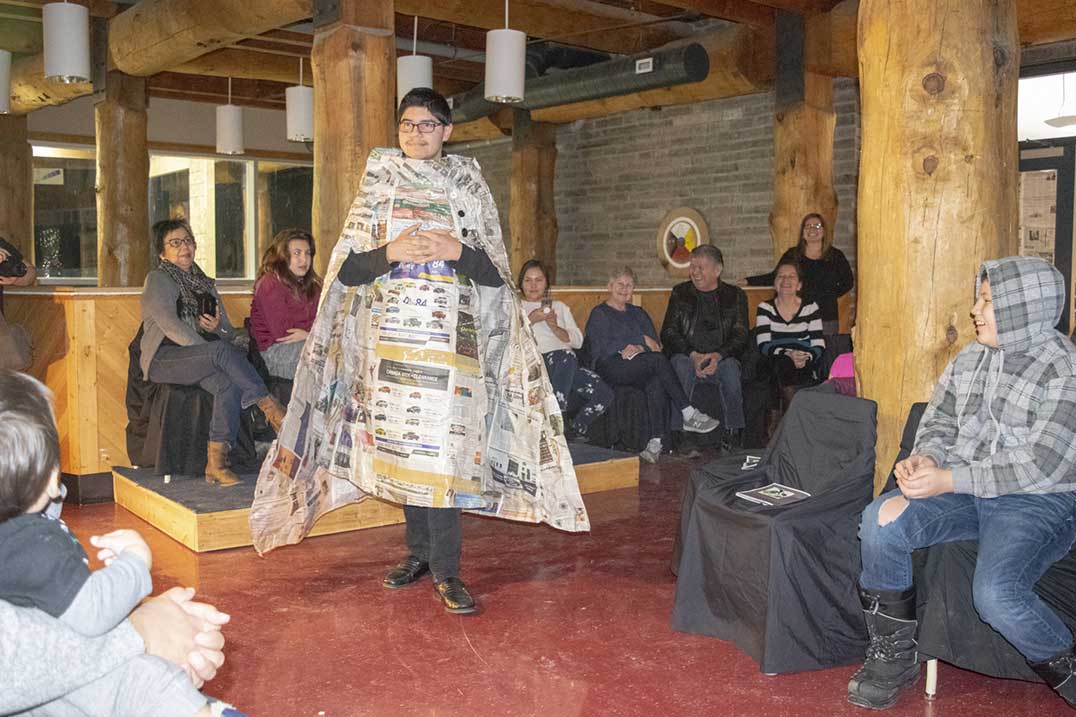
“This was a really cool experience. Everyone participated, girls and boys, and the outfits were all different and challenging,” said Sterling Pangowish, whose final outfit was made from past editions of this newspaper. It was fitting for him—he said he plans to pursue a career in journalism.
The students also praised their teacher for the way she ran the class.
“Mrs. O’Leary is really good at teaching. She encouraged us to put our own style into our clothes,” said Mary. Her final outfit was inspired by her love for old movies, particularly the 1940s era. She then went on to say how the fashion assignment encouraged her to learn more about the problems in the fashion world.
“Modern fashion is so fast. Clothes are mass-produced and out of fashion so soon. By using garbage in our designs it’s a statement of what happens to them,” Mary said.
Diane Jacko was in attendance to support her daughter Monica’s work in the show. She said it was amazing to see the amount of work the students put into the show and the celebration was a great way to cap everything off.
“It’s great seeing kids smiling even though they are shy and nervous. They’re learning new skills, confidence and the ability to learn,” said Ms. Jacko. “They walked in not knowing how to sew and they came back with these teachings.”
For some students, the fashion unit provided perspectives and skills towards possible career options.
“I’ve thought about creating made-to-order clothes, even for myself; it’s kind of a lost craft. That’s something I already considered working on; I always wanted to but now I actually know how,” said Mary.

